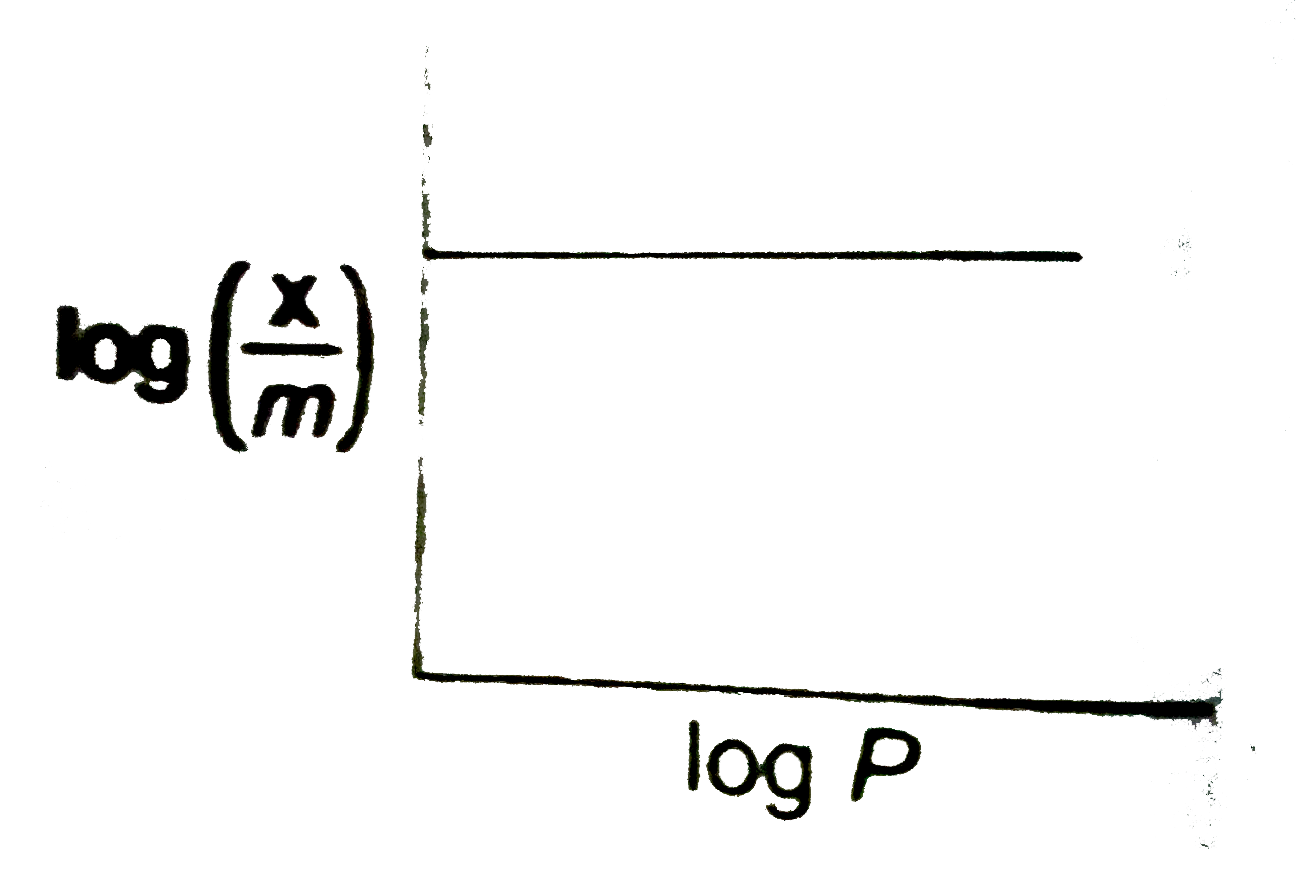Which of the following relations is(are) correct according to Freundlich?
(P)x/m = constant ,
(Q) x/m = constant ×p1/n(n>1),
(S) x/m = constant ×pn(n>1)
All are correct
All are wrong
(ii) is correct
(iii) is correct
The correct Answer is:C
To determine which of the given relations are correct according to the Freundlich adsorption isotherm, we need to analyze each option based on the Freundlich equation.
1. Understanding the Freundlich Adsorption Isotherm:
The Freundlich adsorption isotherm is represented by the equation:
xm=k⋅p1n
where:
- x = mass of adsorbate
- m = mass of adsorbent
- p = pressure of the adsorbate
- k = constant
- n = constant (with n>1)
2. Analyzing Option (P):
The relation given is:
xm=constant
This implies that the extent of adsorption is independent of pressure, which contradicts the Freundlich isotherm. Therefore, this option is incorrect.
3. Analyzing Option (Q):
The relation given is:
xm=constant⋅p1n(n>1)
This is consistent with the Freundlich equation, as it shows that the extent of adsorption is directly proportional to the pressure raised to the power of 1n. Therefore, this option is correct.
4. Analyzing Option (S):
The relation given is:
xm=constant⋅pn(n>1)
According to the Freundlich isotherm, the power of p should be 1n, not n. Therefore, this option is incorrect.
5. Conclusion:
Based on the analysis:
- Option (P) is incorrect.
- Option (Q) is correct.
- Option (S) is incorrect.
Thus, the only correct relation according to the Freundlich adsorption isotherm is Option (Q).
Summary of Correctness:
- (P): Incorrect
- (Q): Correct
- (S): Incorrect
The Freundlich adsorption isotherm is represented by the equation:
xm=k⋅p1n
where:
- x = mass of adsorbate
- m = mass of adsorbent
- p = pressure of the adsorbate
- k = constant
- n = constant (with n>1)
The relation given is:
xm=constant
This implies that the extent of adsorption is independent of pressure, which contradicts the Freundlich isotherm. Therefore, this option is incorrect.
The relation given is:
xm=constant⋅p1n(n>1)
This is consistent with the Freundlich equation, as it shows that the extent of adsorption is directly proportional to the pressure raised to the power of 1n. Therefore, this option is correct.
The relation given is:
xm=constant⋅pn(n>1)
According to the Freundlich isotherm, the power of p should be 1n, not n. Therefore, this option is incorrect.
Based on the analysis:
- Option (P) is incorrect.
- Option (Q) is correct.
- Option (S) is incorrect.
- (P): Incorrect
- (Q): Correct
- (S): Incorrect
Similar Questions
If x is the amount of adsorbate and m is the amount of adsorbent, which of the following relation is related to adsorption process?
(a)xm = f(T) at constant p
(b) p = f(T) at constant (xm)
(c)xm=p×T
(d)xm = f(p) at constant T
View SolutionWhich of the following expressions is correct ( n=no. of moles of the gas, NA= Avogadro constant m=mass of 1 molecule of the gas, N = no of molecules of the gas) ? .
View SolutionFind derivative of the following functions (it is to be understood that a, b, c, d, p, q, r and s are fixed non-zero constants and m and n are integers): (x+cosx)(xtanx)
View SolutionFind the derivative of the following functions (it is to be understand that a,b,c,d,p,q,r and s are fixed non-zero constants and m and n are integers):
x4(5sinx−3cosx)
View SolutionA group between x/m and the presure P of the gas at a constant temperature is called adsorption siotherm. Where x is the no. of moles of the adsorbate and m is the mass of the adsorbent. adsoption isotherms of different shaopes have been experimentally observed .. According to frundlich adosroption isthem,
x/m=KP1/n
where K and N are constant paraments depending upon the nature of the solid and gas
Adsoption isothem of log (xm) and log P was found of the type .

View SolutionFind derivative of the following functions (it is to be understood that a, b, c, d, p, q, r and s are fixed non-zero constants and m and n are integers): (x+secx)(x−tanx)
View SolutionFind the derivative of the following functions (it is to be understand that a,b,c,d,p,q,r and s are fixed non-zero constants and m and n are integers):
xsinnx
View SolutionFind the derivative of the following functions (it is to be understand that a,b,c,d,p,q,r and s are fixed non-zero constants and m and n are integers):
(x+cosx)(x−tanx)
View SolutionFind derivative of the following functions (it is to be understood that a, b, c, d, p, q, r and s are fixed non-zero constants and m and n are integers): cosecxcotx
View SolutionFind derivative of the following functions (it is to be understood that a, b, c, d, p, q, r and s are fixed non-zero constants and m and n are integers): ax4−bx2+cosx
View Solution
